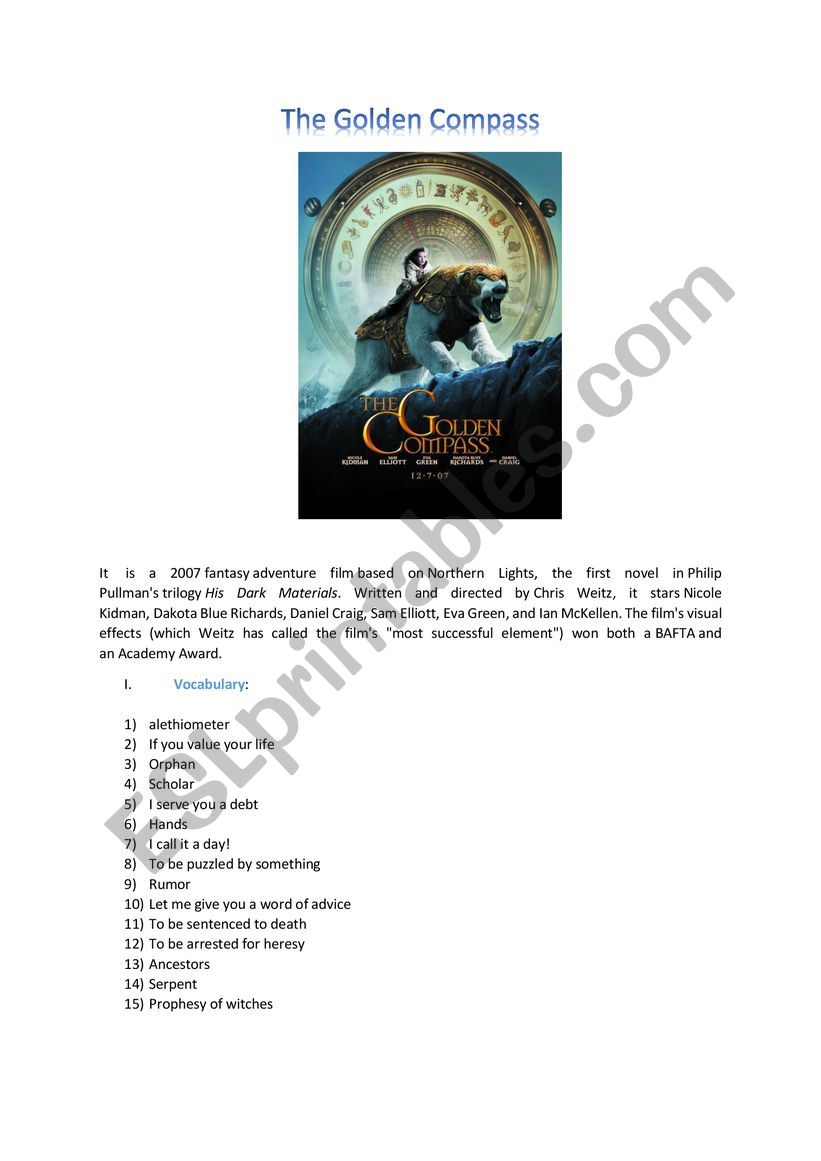
A third of the upper deck was built as a greenscreen set piece to shoot plates with the actors. For the Anbaric energy source that drives the balloon, we used procedurally generated geometry and shaders within Maya.ĭuring her journey to the North, Lyra later finds herself aboard an even more formidable vehicle, the Noorderlicht, a huge Gyptian ship.
GOLDEN COMPASS 2 FILM SIMULATOR
A balloon movement simulator was written to ensure that movement of the real rig was emulated realistically with the undulations of the CG sections. Mudbox was used to create the sculpted sections of the balloons. We created the rest of the craft in CG, including the wires that attach it together then tracked it into the real section. The actors were filmed against greenscreen on a gondola that was mounted on a gimbal rig.

The craft is a four-sphere balloon with a gondola-like platform in the centre, Rowe explains. This time, texturers referenced Chinese lacquered cabinets to create a realistic surface patina.Įven more complex was a remarkable balloon in which Lyra and her friends escape. Similar techniques were used to create a majestic carriage in another sequence.

This was combined with custom PRMan shaders that added point-based occlusion and color-bleeding. After an initial build in Maya, the model was textured using multiple 4K maps made in Photoshop, using photographs as source material. Conceived by Production Designer Dennis Gassner, the vehicles included a spectacular 147-foot long dirigible. For example, good characters have a warm shimmer, while bad characters have a greener shimmering effect.ĭaemon shots wound up being a small part of Cinesites assignment, as the majority of the work focused on the creation of eccentric vehicles and elaborate environments. The final daemon look was photorealistic, although we added a slight color shimmer according to the host characters soul. This proved a wise move when the required look developed to become more realistic during post-production. In the initial brief, the daemons had a spirit look with a slightly transparent feel, but we decided to over-engineer the fur system to cope with possible future changes, Rowe notes. The number and length and size of feathers are controlled by a highly tractable system, with grooming parameters for direction, inclination, curvature, twist, bend and feather type. Feathers were created using a system that grows out of curves placed on the models surface. It was developed as an in-house plug-in enabling the team to groom the fur, and then export the fur description to RenderMan. CG Supervisor Ivor Middleton oversaw rigging, feathers and lighting set-up, before the daemon models were handed over to Animation Supervisor Quentin Miles and his team.Ĭinesite used its proprietary fur and feather pipeline on a wide variety of daemons. Modeling Supervisor Stephane Paris first sculpted clay maquettes, then remodeled the creatures using Mudbox.

VFX Supervisor Matt Johnson joined the team during post-production to helm the huge Bolvanger battle sequence. VFX Supervisor Sue Rowe and VFX Producer Aimee Dadswell-Davies oversaw the 19-month assignment at the London-based Cinesite. While Rhythm & Hues created all the characterization shots, Cinesite was responsible for all background non-talking daemons, which represented a total of 15 distinct animals. It basically implies that photorealistic creatures should be animated for just about every shot in the movie, except for close-ups and cleverly framed shots! Suddenly, the nice concept turns into a massive vfx effort, so massive, in fact, that two vendors ended up sharing it. When a vfx supervisor reads a script in which every character has a daemon alter ego, his first reaction is, Hmmm, thats a nice concept! But then, he starts realizing what it means from a visual effects perspective: every character must always have a daemon beside him. The most unique aspect of Philip Pullmans His Dark Materials books is probably the concept of daemons. Read the first part of our in-depth coverage of The Golden Compass.


 0 kommentar(er)
0 kommentar(er)
